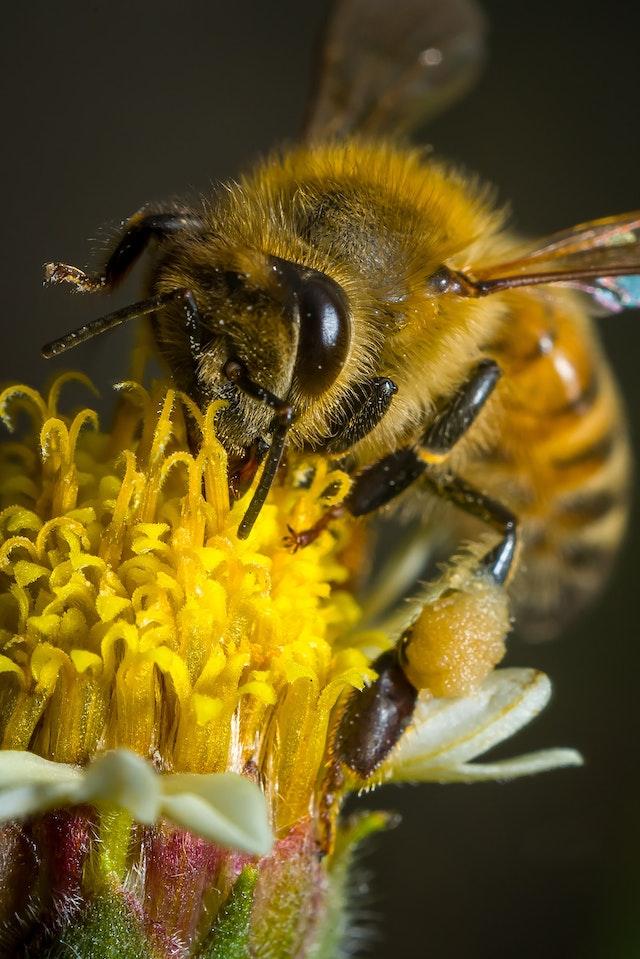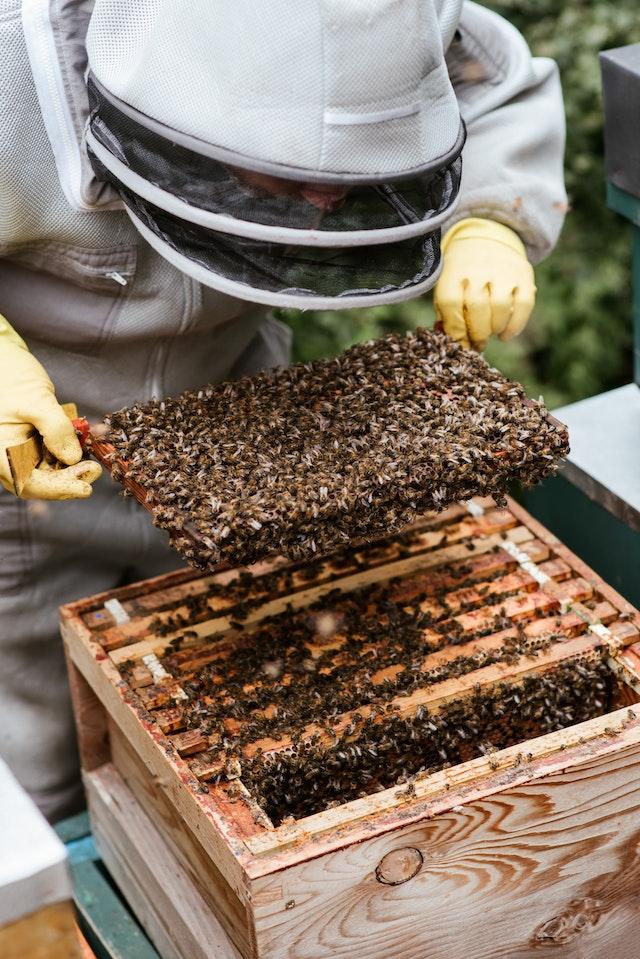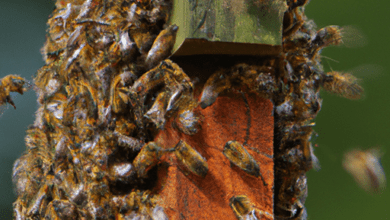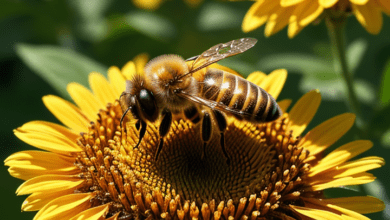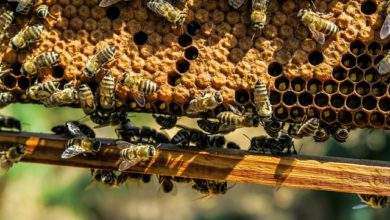How Many Eyes Does a Bee Have?

Do all types of bees have five eyes?
Bees feature eyes that are made up of thousands of tiny lenses and they are known as compound eyes. These compound eyes are the two big eyes that may be easily visible. These thousands of lenses form an entire picture while each lens, which is known as a facet, aids the bee to see a small part of a scene.
In a tile mosaic, there are tiles of different colors that are brought together to create a picture and you can compare the thousands of tiny lenses in the bee’s eyes that all together create an entire picture.
Bees can easily see movement in any direction because all the facets in their eyes are on a different part of a curved surface.
Additionally, you can often prevent bee stings by holding still since they do not see very well when everything holds still. Bee’s eyes do not form a clear image the way humans do despite being able to see movement very easily.
Moreover, the colors that we see and the ones that bee eyes see are quite different. For example, we cannot see ultraviolet light with our eyes while the bees can see it.
On the other hand, we can see a red color while bees cannot see this color. We are better at seeing long wavelengths instead of short ones while bees are better at seeing short ones instead of long ones, in other words.
Apart from the two compound eyes, bees have three very small eyes located at the top of their head in a triangular pattern and they are known as ocelli or simple eyes. These three simple eyes at the top of the bee’s head can detect light, especially changes in light, however, they do not see images.
In case of danger for instance if something is swooping down to eat the bees the ocelli will help them escape. This is because they will have time to fly away after detecting something is wrong since the ocelli will have detected the shadow created by the predator and alerted the bee.
It is very hard to sneak up on a bee because of their compound eyes together with the ocelli. Interestingly, there is hair growing out of the bees’ eyes.
Interesting Facts About Bee Vision
- Each lens on the bee’s eyes can only see a tiny amount of the world around it since each of the lenses in their compound eyes are so tiny and because of this, it is believed that bees are near-sighted.
- Bees process images 15 times more quickly than we do despite them being near-sighted. For example, what may well appear as a flickering light to a bee might appear to be an even fluorescent light to humans.
- Despite not being able to distinguish red color very well, most colors perceived by humans can be recognized by bees. For instance, inside a red flower, there are ultra-violet markings perceived by the bee that we cannot see and because of this, they visit the flowers.
- The five eyes of the bee are attuned most to see ultra-violet light, green, and blue.
- For bees, black is not the only eye color. The digger bee – Mellissodes stearnsi and Xylocopa parkinsoniae have blue eyes therefore there are bees with different colored eyes.
- There are multiple species of bees such as some Anthophora, Xylocopa, Halictid species, and many more that feature large green eyes.
- To enable certain bees to forage in reduced light they have their eyes specially adapted.
You should note that not all bee species have hairy eyes and it is only the honey bee that does.
Because of the very clever use of hairs covering their entire body in various densities including their eyes, the honey bee can carry up to 30 percent of its body weight in pollen according to the founding of a study by Georgia Tech.
A grain of dandelion pollen, which is typically collected by bees is approximately the same size as the gap between each eye hair of the honey bee according to the results of the research.
This is essential when grooming since it allows the honey bee to keep pollen suspended above its eye and this also allows its forelegs to comb through and collect pollen particles
FAQs
Why do bees need five eyes?
To be able to collect nectar reward from the flower bees will need five eyes to be able to see UV markers in the flower which will then guide the bee onto the landing platform of the flower where nectar is.
The surroundings around the bees are perceived from a slightly different angle because of the tiny lens in their compound eye.
How many eyes does a wasp have?
Typically, most people perceive that bees, wasps, and flies have two eyes. However, they have five. You might wonder where are the other three.
A big pair of compound eyes with a little triangle of tiny ocelli between them is the typical arrangement. A kind of elementary single-lens eye that does not delineate form is an ocellus.
How do bees see humans?
Bee color vision is based on blue, green, and ultra-violet light, unlike humans whose color vision is based on red, blue, and green. To the human eye, UV light is invisible while bees can see it whereas humans can see the red color while bees cannot.
Are bees color blind?
Bees can see the ultra-violet spectrum while humans cannot. On the other hand, humans can see red color while bees cannot and this is due to the fact that many insets see from approximately 300 to 650 nm and bees are among them.
Are bees attracted to bright colors?
Bees associate most bright colors with flowers and therefore they will take note of most bright colors. Yellow and blue are the colors that bees love most.
How many eyes does a simple bee have?
At the top of the bee’s head, there are three small, single-lens eyes known as the ocelli. It is still unknown the exact function of these organs in honey bees.
What color do bees hate?
Dark colors are disliked by bees and they are not alone. Bees see red as black and therefore it triggers a similar response. Avoid wearing dark colors if you want to avoid being stung by bees.
Therefore, you should wear bright color attire such as tan, pale or white.
What color do bees ignore?
Dark colors are perceived as a threat instinctively by both bees and wasps. Additionally, they perceive dark colors as a threat and both bees and wasps see red as black.
Bees will ignore tan, white, cream, or grey as much as possible since they do not perceive them as a threat hence, they ignore them. On the other hand, you should avoid wearing red, black or brown clothes.
